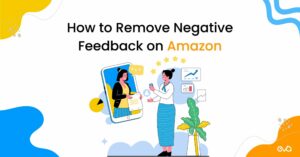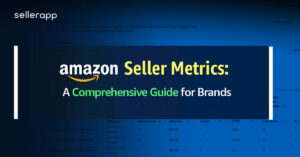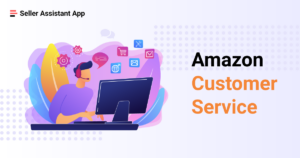Navigating the Copyright Maze: A Comprehensive Guide to Avoiding Copyright Strikes on Your YouTube Channel

In the vast and diverse world of online content creation, navigating the complexities of copyright law is essential for maintaining a successful and sustainable presence on platforms like YouTube. As a content creator, understanding the nuances of copyright law and taking proactive measures to avoid copyright strikes is crucial for protecting your channel, preserving your creative integrity, and avoiding potential legal consequences. With millions of videos being uploaded to YouTube every day, the risk of inadvertently infringing on someone else’s copyright is a constant concern for creators. However, by educating yourself about copyright law, respecting the rights of others, and following best practices for content creation and distribution, you can minimize the risk of receiving copyright strikes and build a channel that thrives in a responsible and ethical manner.
In this extensive guide, we will embark on a comprehensive journey through the intricacies of avoiding copyright strikes on your YouTube channel. From understanding copyright basics to implementing strategies for content creation, licensing, and attribution, this guide will equip you with the knowledge and tools needed to navigate the copyright landscape effectively and protect your channel from potential infringement issues.
Understanding Copyright Basics
Before diving into strategies for avoiding copyright strikes, let’s start by exploring the fundamentals of copyright law and how it applies to content creation on YouTube:
- Copyright Ownership: Copyright is a form of legal protection granted to creators of original works, including videos, music, images, and written content. As the creator of a work, you automatically hold the copyright to that work and have the exclusive right to reproduce, distribute, and display it.
- Fair Use: Fair use is a doctrine within copyright law that allows for the limited use of copyrighted material without permission from the copyright holder under certain circumstances, such as for criticism, commentary, news reporting, teaching, scholarship, or research.
- Copyright Infringement: Copyright infringement occurs when someone uses copyrighted material without permission from the copyright holder, thereby violating the exclusive rights granted to the copyright holder under copyright law.
Strategies for Avoiding Copyright Strikes
Now that we understand the basics of copyright law, let’s explore strategies for avoiding copyright strikes on your YouTube channel:
1. Create Original Content
- Focus on Originality: Whenever possible, create and publish original content that you have created yourself. Original content is less likely to infringe on someone else’s copyright and reduces the risk of receiving copyright strikes.
- Avoid Using Copyrighted Material: Refrain from using copyrighted material, such as music, images, or video clips, without permission from the copyright holder. Instead, seek out royalty-free or Creative Commons-licensed content for your videos.
2. Obtain Proper Licensing
- License Music and Media: If you want to use copyrighted material in your videos, obtain proper licensing or permission from the copyright holder. Many music libraries and stock footage websites offer affordable licenses for creators to use copyrighted material legally.
- Use Public Domain Material: Utilize content that is in the public domain, meaning it is not protected by copyright and can be used freely by anyone for any purpose.
3. Attribute Properly
- Give Credit to Copyright Holders: If you use copyrighted material with permission or under a Creative Commons license, be sure to provide proper attribution to the copyright holder as specified by the license terms.
- Include Disclaimers: Include disclaimers in your video descriptions or end screens to acknowledge that you do not own the rights to certain copyrighted material and that it is used under license or with permission.
4. Understand Fair Use
- Educate Yourself: Familiarize yourself with the principles of fair use and how they apply to your content. Understand the factors that courts consider when determining whether a particular use of copyrighted material qualifies as fair use.
- Use Fair Use Guidelines: If you believe your use of copyrighted material qualifies as fair use, follow the fair use guidelines and principles to ensure that your use is transformative, limited in scope, and does not harm the market for the original work.
5. Utilize YouTube’s Content Policies
- Review YouTube’s Content Policies: Familiarize yourself with YouTube’s Community Guidelines and copyright policies to ensure that your content complies with the platform’s rules and standards.
- Use Copyright-Free Resources: Take advantage of YouTube’s library of copyright-free music, sound effects, and creative tools to enhance your videos without risking copyright infringement.
Best Practices and Considerations
As you strive to avoid copyright strikes on your YouTube channel, keep the following best practices and considerations in mind:
- Stay Informed: Stay informed about changes to copyright law and YouTube’s policies and guidelines to ensure that your content remains compliant and up-to-date.
- Be Proactive: Take proactive measures to avoid copyright infringement by creating original content, obtaining proper licensing, and understanding fair use principles.
- Seek Permission if Unsure: If you are unsure whether your use of copyrighted material qualifies as fair use or if you need permission to use certain content, err on the side of caution and seek permission from the copyright holder.
- Monitor Your Content: Regularly monitor your channel for copyright claims and disputes, and take prompt action to address any issues that arise.
Conclusion
Avoiding copyright strikes on your YouTube channel requires a combination of education, diligence, and responsible content creation practices. By understanding copyright basics, creating original content, obtaining proper licensing, attributing content correctly, and following fair use principles, you can minimize the risk of infringing on someone else’s copyright and protect your channel from potential legal consequences.
Remember to stay informed, be proactive, seek permission when necessary, and monitor your content regularly to ensure that your channel remains compliant with copyright law and YouTube’s policies. With dedication, diligence, and ethical content creation practices, you can build a successful and sustainable channel on YouTube that respects the rights of creators and fosters a fair and equitable online environment for all.
So, start implementing these strategies for avoiding copyright strikes on your YouTube channel today, and protect your creative work from potential infringement issues. With the right approach and mindset, you can navigate the copyright landscape effectively and build a channel that thrives while respecting the rights of others. Happy creating!




